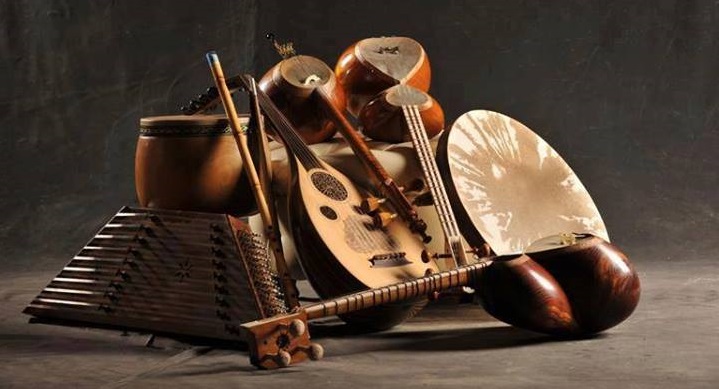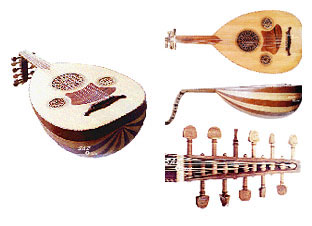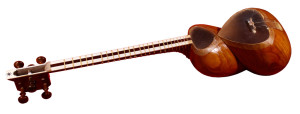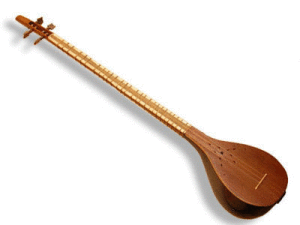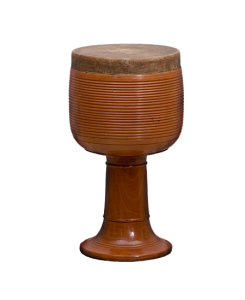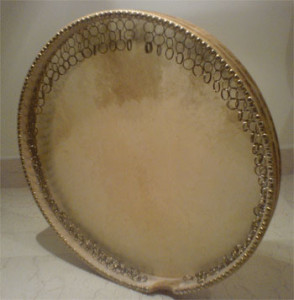We are proud to announce that now we are offering Persian music lessons, Tar, Setar, Daf, Tombak, and Barbat at Touch Art Gallery. All levels of elementary, intermediate, and advanced are welcome to register. The classes are one-on-one and on a weekly basis. For more information call 617-547-0017.
Barbat
The Barbat is an ancient instrument of Persian origin, refined during the Arab age into the current form of Oud. After Tanboor it is the oldest string instrument in Iran. In 800 B.C a kind of Barbat was used. In some books the invention of this instrument is ascribed to Barbad. As it is told in some books, the reason to name this instrument Barbat is that this name is the Arabic form of Barbad, but in some other books it is told that Bat means chest, so the similarity between the form of a Barbat and the chest of a drake is the other reason for its name. After Islam’s attack to Iran this instrument was taken to Arabia and after a while it came back to Iran with a bit change in it. For Islamic culture penetrated in to Europe, this instrument was used is some parts with different names , for example in Italy it was called “Lotto”, in France “Loth” in Portugal “Aland” a and in Spain “Loud”. This instrument was abolished in Safavidth period by an unknown reason (maybe because of the religious fanaticism), even till recent decades.
More Information over Barbat: [ www.barbat.us ]
Kamancheh
The Kamancheh is the traditional classical bowed lute of Persian classical music and dates back to antiquity. It has a small, hollowed hardwood body with a thin stretched fish-skin membrane. Its neck is cylindrical, and it has four strings. In central Iran, Kamancheh has conical body while the back side of it is open.
Often known as the “spiked fiddle”, because of the spike protruding from its lower end, it is played vertically in the manner of the European viol. The bowstrings are pulled by the player which accommodates subtle tone variations. It is suspected that the fourth string was added in the early twentieth century as the result of the introduction of western violin to Iran.
Tar
Belonging to the lute family, the Tar appeared in its present form in the middle of the eighteenth century. The body is a double-bowl shape carved from mulberry or walnut wood, with a thin membrane of stretched lamb-skin covering the top. The long fingerboard has twenty-six to twenty-eight adjustable gut frets, and there are three double courses of metal strings. Its range is about two and one- half octaves, and is played with a small brass plectrum.
The word Tar means string in Persian. This is claimed to be the root of the names of the Guitar and Persian setar as well as less widespread instruments such as the dutar and the Indian sitar. Though it was certainly developed in the Persian Empire, the exact region in which it was first made and played in the Persian Empire cannot be confirmed.
Setar
The ancestry of the Setar can be traced to the ancient Tanbur of pre-Islamic Persia. After Islamic Persia, playing music encountered some constraints. Tanbur became smaller for people to transport it hiddenly. Some people believe that this is how Setar was created.
Setar is made from thin mulberry wood and its fingerboard has twenty-five or
twenty-six adjustable gut frets. Setar is literally translated as “three strings”. However, in its present form, it has four strings and it is suspected that Setar initially had only three strings. Because of its delicacy and intimate sonority, the Setar is the preferred instrument of Sufi mystics.
Tombak
The Tombak is a chalice-shaped drum carved from solid woods such as mulberry or walnut wood. It is covered at the wide end by a membrane of lamb or goat skin (Diameter = 9.8-11.8 inches). The length of Tombak is approximately 17.7 inches.
The technique of this instrument uses both hand and consists of rolling and snapping the fingers in various ways. The rich variety of tones and textures on this instrument (both skin and wood) allows the player to punctuate and ornament the melodic phrases as well as create rhythmical patterns.
Daf
The Daf is a type of frame drum that is depicted in many Persian miniatures and has reliefs from thousands years ago. Daf plays a key role in Sufi mystics and swirling dance in Iran.
Although it appears at first sight to be a relatively simple instrument, the Daf has the potential of producing intricate rhythmic patterns and sounds. The Daf is equipped with metal rings on the inside which add a jingle effect to the sound. The frame is covered with goat or lamb skin. The diameter of the Daf is between 20 to 27 inches.

